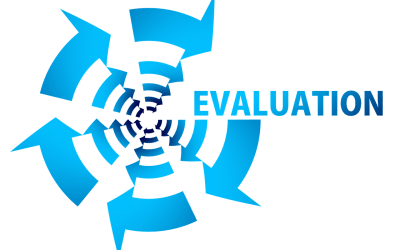
Expert Advice from a fellow EB-5 Investor
EB-5 Projects selection
Picking the right EB-5 project is a daunting task. Few other investments come with the opportunity to put your resources to work making an immediate positive impact while earning U.S. residency at the same time.
So why work with Us?
- You can choose from multiple EB-5 projects – Rural & TEA
- We only work with Regional centers with 10+ years track record
- We only work with Regional centers with proven history of capital repaid back
- We are Dual Registered with USCIS & SEC and compliant with all laws
- No fees paid by you to us.
- We visit the EB-5 project sites and complete a full project financial due diligence
- Complete Investment support during and after filing of your EB-5 petition till return of investment
EB5 Resources is a full-service concierge, advisor, and consultancy specializing exclusively in EB-5 project investments. We help you navigate the complicated terrain of the USCIS RIA regulations (2022 Reform and Integrity Act), your EB-5 petition, and EB-5 visa processing while avoiding common pitfalls that could lead to delays, denials, or even the loss of your investment.
Led by a successful EB-5 investor and Licensed & Registered Investment Banker with deep experience in finance and investing, we painstakingly vet individual EB-5 projects and investment opportunities through a combination of on-the-ground research and verification, due diligence, and rigorous risk management standards. Then, we use a systematic approach to match you to a project that matches your objectives.
Once you’ve chosen a project, we work directly with you and your immigration team to make sure the entire process flows smoothly from start to finish, all while actively monitoring your investment and reporting on the project process. The best part? It is all at no additional cost to you.
No Results Found
The page you requested could not be found. Try refining your search, or use the navigation above to locate the post.
How to Respond to a USCIS Request for Evidence (RFE)?
US visa guidelines have been reformed and updated with the Biden administration taking over and COVID-19 restrictions...
EB-5 Investment back to $500,000 USD, but for how long?
Judge strikes down USCIS 2019 decision to increase investment limit to $900,000 Update: This is an older article. The...
Difference Between E2 And EB-5 Visa
What Is An E2 Visa? An E2 visa is a popular option for alien investors who want to stay in the USA and earn profits...
Frequently Asked Questions
What Routes Are Available to Prospective EB-5 Investors?
Lorem ipsum dolor sit amet, consectetur adipiscing elit. Fusce commodo, lectus ut suscipit euismod, quam sapien aliquet sapien, in bibendum sem est nec sem. Phasellus felis turpis, feugiat sed sem nec, consequat molestie lacus.
What Parties are Involved in the EB-5 Process?
The EB-5 process can be complicated, and working with experienced advisors and professionals ensures that you avoid common pitfalls that could, at best, extend processing times and, at worst, lead to a denial. The various professionals that typically collaborate on any EB-5 petition include:
1. EB-5 Advisor:
An EB-5 advisor can serve as a quarterback for your EB-5 journey by vetting service providers, engaging in due diligence on projects, and working with you one-on-one to ensure a smooth process. As a FINRA registered Agent I interact with Regional Centers, EB-5 immigration attorneys, securities attorneys, economists, and business plan writers on a daily basis. I constantly conduct due diligence on projects and I remain cognizant of changes in EB-5 policies and regulations. As part of my services, I offer recommendations to investors detailing the pros and cons of each project. If an investor chooses the Direct EB-5 Investment route, I not only provide guidance through the process of successfully establishing the business, but also provide access to my network of professionals to ensure the EB-5 petition is approved by USCIS without a hitch.
2. Immigration Attorney:
Your immigration attorney will assist with immigration planning; develop a source of funds strategy and help compile the associated documentation; and ensure that you remain in compliance with immigration regulations. Your immigration attorney will work with you throughout the process, starting with the I-526 petition and ending with your citizenship application. As the EB-5 process involves multiple intertwined steps, it is crucial that you choose an experienced attorney with in-depth knowledge of the complexities of EB-5 law.
3. Regional Center/Investment Issuer:
The Regional Center manages your investment throughout the EB-5 process. It is important to thoroughly vet the Regional Center by asking in-depth questions about prospective projects and the Regional Center’s track record, and validating the information with our advisor and attorney. As your EB-5 advisor, I can analyze and compare Regional Centers and their sponsored projects so you can select the best fit for your immigration and investment goals.
If you choose the EB-5 Direct route, you will not work with a Regional Center and instead will require additional service providers to complete a comprehensive petition. These include:
4. Business Plan Writer:
The business plan is a crucial aspect of the I-526 petition as it is the document that USCIS uses to determine whether the proposed business will meet the job creation requirements. If you are pursuing an EB-5 visa through the Regional Center route, the associated Regional Center will develop a business plan for each sponsored project that is USCIS compliant, as well as an economic report that projects indirect and direct job creation using approved methodologies. If you are pursuing the Direct EB-5 route, you must furnish your own business plan for the I-526 petition. EB-5 business plans must meet specific criteria set forth by USCIS and are more complex than standard business plans. It’s important to work with a business plan writer that has extensive experience in the EB-5 industry and a successful track record of approvals with USCIS. As your EB-5 advisor, I can connect you with the industry’s leading plan writers.
5. Economist:
Economists develop Economic Impact Reports and can also conduct analyses of project locations to determine whether they are Targeted Employment Areas and, thus, qualify for the lower investment amount.
Economic Impact Reports are typically only used for Regional Center projects, as they analyze direct as well as indirect and induced job creation (the latter of which can only be counted under the Regional Center model). A comprehensive business plan (complete with direct job projections backed by cited industry benchmarks and market data) is sufficient for Direct EB-5 projects.
In the Direct EB-5 route, an economist is needed to conduct an analysis of a project’s location to ensure that it qualifies as a TEA. New regulations that went into effect at the end of November 2019 changed the definition of a TEA, making certain locations more difficult to qualify. An economist can run an analysis of unemployment and labor force data to determine whether a location does or does not qualify. This is important during the project planning process and is also documentation that must be submitted with an I-526 application.
6. Securities Attorney:
A securities attorney can develop operating agreements and company formation documents for new ventures. He or she would also be key in assembling private placement memorandums and offering documents for ventures that are raising capital.
Regardless of the route you plan to take to obtain your EB-5 visa, I can put together the right team to handle your case.
How Long Does it Take to Get My Green Card After Making My Investment?
While timelines can vary wildly, USCIS is currently taking two to three years (on average) to adjudicate an I-526 petition. For nationals of China and Vietnam, the timeline is longer due to a backlog of EB-5 applicants. USCIS frequently publishes updates on processing times and visa backlogs. Contact us and we can provide an estimated timeline based on your specific case.
What is a Conditional Green Card?
The conditional green card (CGC) is issued after USCIS approves your I-526 petition and you have completed your consular interview abroad or after you have an adjustment of status approved. The CGC is valid for two years from issue and the holder is entitled to all the rights and benefits of a permanent resident. The only difference between a conditional green card and a green card is that the CGC is valid for two years only. Within 90 days before the end of the two years, you need to file form I-829 to remove the conditions on your green card. At this stage, USCIS will check whether the investment has been at risk for at least two years and that a minimum of 10 jobs have been created as a result of the investment.
Can I Work and Travel With a Conditional Green Card?
Yes, conditional green card holders can do everything that a permanent resident is entitled to do. There are no limitations apart from timely filing the I-829 form before the end of the two year anniversary of the issuance of the conditional green card.
What is the Timeline for Removal of Conditions?
Conditional green card holders can apply for a permanent green card by filing Form I-829 90 days before the conditional green card expires (i.e. 21 months after receiving your CGC). USCIS’s current processing time for form I-829 is approximately two years. However, filing the I-829 gets you an 18-month extension of your CGC. Furthermore, you may visit a USCIS service center and get a I-551 stamped on your passport extending your CGC status while the I-829 is being adjudicated by USCIS.
What Can I Do to Prepare to Apply for the EB-5 Visa?
In preparation for your investment, you should focus on two important aspects of the process:
1. Finding a good, reputable project with a proven track record to invest in; and
2. Gathering the USD $900,000 (or $1.8 million for projects not in a TEA) prior to investment and ensuring the source of your investment funds is properly documented. Your immigration attorney will assist with this.
What Qualifies as a Good EB-5 Project?
In order to qualify as an EB-5investment, the investor’s funds must be “At-Risk”. As such, there can be no guarantee of a return on investment. But this does not mean that an EB-5 investor must take on unnecessary risk. Working with an experienced advisor can help mitigate that risk.
Key considerations for identifying a solid EB-5 project include:
Project Details:
A project should have a detailed and credible business plan that investors can use to evaluate the fundamentals of the project.
Regional Center and Developer Track Record:
Investors should look at the background of the Regional Center and whether it has sponsored any successful EB-5 projects. Similar scrutiny should be applied to the principals and developers of the chosen project.
Capital Stack and Financial Strength:
When conducting due diligence, investors should look into the developer’s debt:equity leverage ratio to see if they are borrowing excessively to finance the project. Ideally, EB-5 capital should be paired with both developer equity and financing to form a strong capital stack for the project Investors should ask the following question: Can the project survive a recession and still have the ability to pay back the investor their $900,000 at the end of the term?




